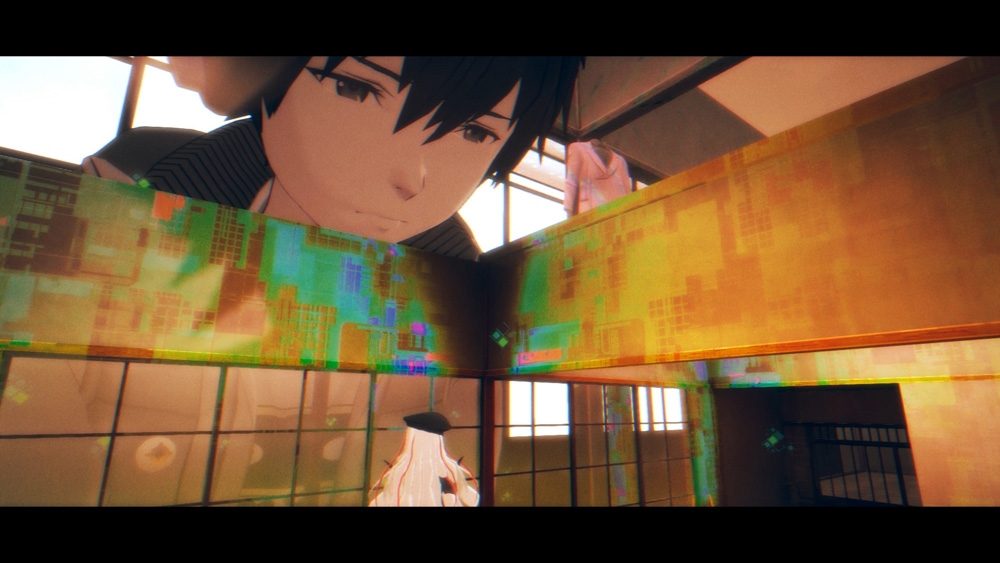There’s a good mystery at the heart of Spike Chunsoft’s new (and awkwardly titled) visual novel AI: The Somnium Files—Nirvana Initiative, as there is at the core of most of writer Kotaro Uchikoshi’s games. The author of titles like the well-received escape room/visual novel hybrids 9 Hours, Nine Persons, Nine Doors; Virtue’s Last Reward; and Zero Time Dilemma, Uchikoshi is always careful to weave an elaborate but mostly fair mystery into his games—“mostly” because he’s also a fan of incorporating bits of elaborate sci-fi bullshit into his plots that tend to complicate the locked-room conundrums they revolve around.
As the name suggests, the game is a direct sequel to 2019's AI: The Somnium Files, with which it shares a basic hook: You and your AI partners attempt to solve the case of a serial killer with a bizarre MO—slicing victims in half, in this case, and leaving said halves at various points around the city—by using a machine to explore the dreams of a wide variety of informants and subjects. Gameplay is split between basic point-and-click conversation, a few Quick Time Event sections for action scenes, and, as the bulk of the game’s gameplay, the Somnium sections, more traditional adventure game sequences where you navigate the dreaming world and unravel your subject’s mental walls.
Credit where it’s due: Designer Akira Okada (now also taking over the game’s director role from Uchikoshi) has much improved these Somnium sequences from the first game, where they could often grind the progression of the story to a halt. Rather than a sometimes ambiguous and arbitrary set of dream logic puzzles, the Somnium sequences now almost all have a much stronger idea built into them. These can include participating in a demented quiz show, battling it out in a metaphor-heavy cooking competition, or playing hide-and-seek with a deranged mad scientist. There’s still nothing quite on par with the psychedelic mental worlds of a game like Psychonauts, but it’s still a step up from the first game.
Meanwhile, Uchikoshi continues to explore many of the themes that have appeared throughout his career: Identity, duality, the relationship between the player and the virtual world, shifting timelines, and women’s breasts. And, hey: If it that last bit felt like an unwanted and distracting intrusion into an otherwise interesting conversation, well, now you have a sense of what playing Nirvana Initiative is like.
Even when he’s not getting distracted with a series of longform dick or boob jokes, Uchikoshi can sometimes feel like he’s just playing the hits here; we won’t say we predicted all of the plot twists the game tosses at its players as they navigate two sets of killings separated by a gap of six years, but those familiar with the writer’s work will probably see at least a few of his more regular tricks coming. Meanwhile, the lighter, more sitcom-y tone from the first AI—still vigorously at odds with the game’s grisly subject matter—continues to disrupt both the tone and any sense of potential stakes. You’ll need to have a stomach for deeply unfunny comedy, extended dance numbers, and bizarre digressions to get to the good stuff here; at least there’s a built-in fast-forward button to make some of it go down easier.
As we said up top, there is a good mystery story at the core here, even if its complications aren’t quite as compelling as those of the first game’s. (And if you have a taste for the meta, Uchikoshi has you covered, as always.) And those Somnium sequences really are a major step up from the original. But if Uchikoshi’s work has always involved digging through the less savory or interesting elements to get to the treasure buried underneath, then Nirvana Initiative may be the biggest such pile of his career.


 Keep scrolling for more great stories from A.V. Club.
Keep scrolling for more great stories from A.V. Club.